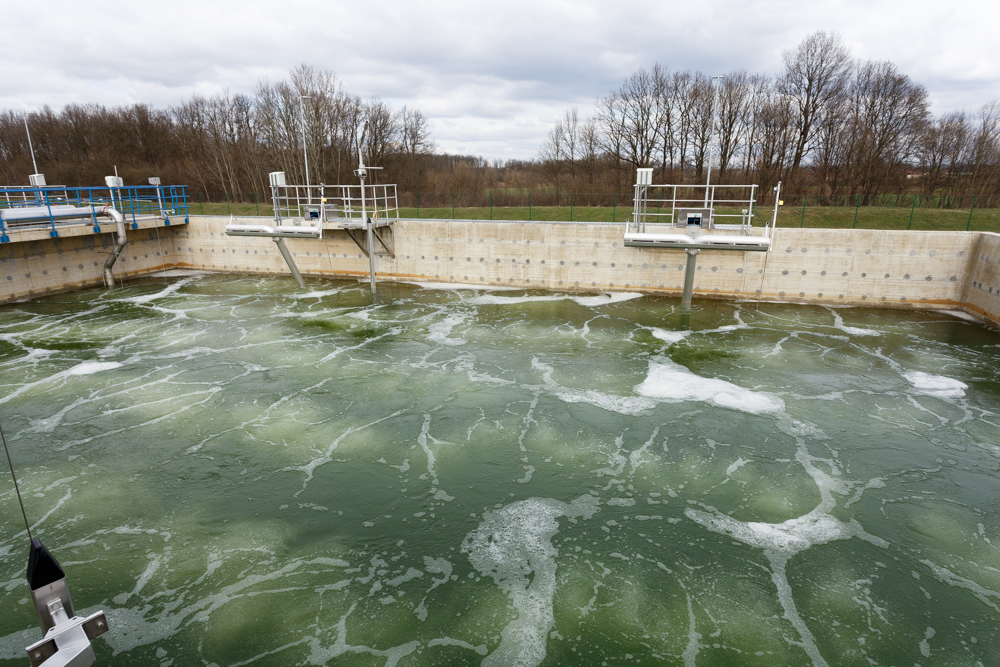The European Union recognised the importance of water supply and sewerage problems in Bijeljina in 2010, financing the project Construction of the water supply system and the sewerage network in Bijeljina. The EU investment, through the IPA programme, amounts to 6,500,000 Euro while other funding sources were loans from the Swedish International Development Cooperation Agency (SIDA) and European Bank for Reconstruction and Development (EBRD) together with funds from the Municipality of Bijeljina.
The town of Bijeljina is situated in the northeast of Bosnia and Herzegovina and, according to the 2013 population census, has a population of 107,715. Until 2007, Bijeljina did not have a sewerage system and the waste water services were limited to communal and individual septic tanks. This situation represented a serious health hazard given the fact that the only source of potable water was the underground aquifers.
Settlements in the northern part of Bijeljina municipality, along the Sava and Drina Rivers, were supplied with water from individual wells. Drinking water quality was very poor and as a consequence the incidence of nephritis, a serious kidney disease, was very high. Drinking water quality from the shallow wells was very poor due to the impact of the rivers and upstream discharges into surface waters from Bijeljina town waste water. For these reasons, connecting the settlements to the Bijeljina town urban water supply network was the only possible solution.
Darko Mitrić, Executive Director of Sewerage at the Bijeljina Public Water and Sewerage Company, claims that the issue of the collection, treatment and discharge of waste water of the settlements and industry of Bijeljina was not adequately dealt with until 2005. “The significant increase in the number of inhabitants in the town and in the municipality, as a result of war migration of the population, further increased the already significant problem of unresolved collection and treatment of waste water. In the town of Bijeljina and Janja settlements that have a mixed sewerage system, the issue of waste water was mainly addressed through individual or communal septic tanks. The Dašnica channel, an artificial watercourse, carried a controlled flow of water from the river Drina in the Sava River that runs through the town. However, excavation caused a moderate leakage from the canal into the ground and vice versa, causing the inevitable pollution of groundwater. In other settlements in the municipality, waste water leaked into the ground through septic tanks or was discharged directly into the nearest surface watercourse,” Mitrić says.
As Mitric explains, the Municipal Administration of Bijeljina, aware of the issue, adopted the Decision on the construction of the sewerage system in the town of Bijeljina in 2005.
The EU funded project aimed at preventing further pollution of underground aquifers that are used as sources of potable water, thus reducing the health hazard for the town’s population, and ensuring compliance with the EU directive for urban waste water.
The total value of the investment is € 35 million, implemented in phases.
Phase I: Water Supply Distribution Network – Northern Ring
Phase II: Main Secondary Sewerage Collector Nr. 8 located in Galac Street near the main water wells
Phase III: Waste Water Treatment Plant (WWTP) with a capacity for a population equivalent of 40,000 with the possibility of a phased increase
Bijeljina citizen Davor Nenadović feels the benefits already and notes the importance of the project for ordinary citizens. “In addition to protecting the town’s water source, the new sewerage system solved many of the problems that our town had with sewerage. Those waters are no longer discharged into the rivers as it was the case earlier. In previous years we had the Dašnica channel that was a sewerage stream from our town. Today it’s different. People in buildings no longer have to discharge their septic tanks that are quickly filled; we finally got rid of these odours. The cellars of our buildings are no longer flooded from the septic tanks,” citizen Nenadović concluded.
Within the project, a Waste Water Treatment Plant (WWTP), a biological treatment facility compliant with EU directives for urban waste water was officially opened in February 2016.
Saša Bjelica, a WWPT Maintenance Engineer, underlines the three most important results of the project. “Significant improvement of the quality of surface water, especially in the Dašnica channel, together with introducing collection services and waste water treatment and expansion of the drinking water supply system, have significantly improved the standard of living in Bijeljina,” Bjelica explains.
According to Bjelica, special satisfaction comes from the fact that the project assisted in achieving and maintaining the standards compliant with EU directives for urban waste water, sludge and drinking water. “Biological treatment of waste water is based on a purification process by which the bacteria are supplied with oxygen. The bacteria use the ingredients in waste water as nutrients for their metabolism, thus cleaning the waste water simultaneously. All the waste collected in the mechanical treatment is deposited in the containers and disposed of at a regional landfill,” Bjelica adds.
Completion of all construction works including the structures, internal and access roads together with trained WWTP staff have contributed to modernising Bijeljina. Citizens also recognise the WWTP as a major step in environmental protection in Bijeljina. “With a modern WWTP, we greatly protect the environment and nature in our town. Protecting the environment is raised to a more adequate level and we are finally becoming a town whose development is in step with the necessary infrastructure,” Nenadović said.
Davor’s opinion is shared by his fellow citizen Helena Mandić who also reckons that the removal of septic tanks has improved everyday life in the town. “The first and most important thing is that we got rid of septic tanks in Bijeljina, which were built without any control whatsoever and were quite dangerous for the health of the citizens. We are finally moving toward a better town, better life to all of us who live here, especially our children,” Mandic concluded.






